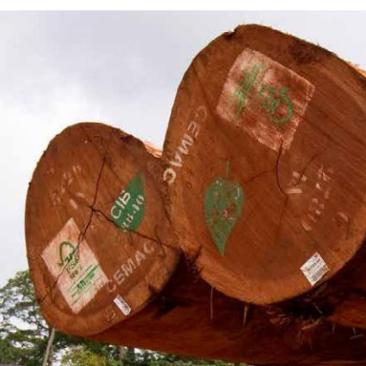Despite the EU Timber regulations, there is still a significant risk that furniture being sold in the UK will contain timber that has been illegally sourced. In fact, total furniture imports from ‘high risk’ countries (where the potential for illegal timber is greater) is valued at €1.9 billion per year. This poses a very real risk to reputation for businesses who, by sourcing such material, may be inadvertently having a highly damaging impact on biodiversity in forests from which their timber is extracted.
WWF recently launched a report examining how well the furniture sector is addressing issues of responsible sourcing of timber and timber products. An assessment ranked furniture retailers based solely on publicly available information downloaded from their websites. Encouragingly, of the 74 brands surveyed, 10 achieved the maximum ‘performance’ rating. Less encouragingly, 39 of the 74 (53%) were rated ‘no information’, as they had made no reference whatsoever to responsible timber sourcing. Comparison with other sectors covered in WWF’s 2015 Timber Scorecard, suggests that the furniture sector is lagging behind in terms of sourcing commitments and public disclosures of performance.
The ‘Are you sitting comfortably?‘ report (http://bit.ly/2hJbNE9) helps to raise the issues for those companies that were not aware of the risks they face, and also lays out some clear and simple steps that they can take to both reduce their risk and improve their performance. Most importantly, companies need to make a genuine commitment to doing better in terms of understanding their supply chains and putting in place requirements that ensure their product components can be properly traced. Five key elements were identified:
- Publish a responsible timber sourcing policy that makes public your commitments to best practice, with clear targets that are reported against annually.
- Engage with suppliers to make sure they are fully aware of your requirements and expectations.
- Display a positive commitment to a credible forest certification scheme (such as FSC) and through chain of custody certification, prove to customers that timber has originated from certified and well-managed forests. This can be aligned with a clear procurement policy (see p24 for information and guidance on procurement)stating the preferred/sole use of recycled fibre/wood and prohibiting materials from unacceptable sources.
- Pro-actively communicate with customers, suppliers, employees, shareholders and other stakeholders on plans to source timber responsibly and to build credibility and trust through demonstrating a commitment to making genuine, measurable progress.
- Seek support from suppliers, industry bodies, environmental groups and even competitors, who may be able to share experiences or resources to help with responsible sourcing.
There is no shortage of tools, case studies and guidelines to help companies embarking on this journey. Our own programme, the Global Forest and Trade Network (GFTN) assists businesses in overcoming obstacles to responsible sourcing, providing them with guidance on how to exercise due diligence on supply chains for forest goods and prioritise sourcing from legal and sustainable forest sources. We share a lot of tools online and are happy to pass them on directly with any businesses willing to take action. We can also help point the way to relevant organisations such as FSC.
With the environmental performance of the private sector coming under increasing scrutiny, it makes good business sense to secure a sustainable and responsible supply chain, and in doing so, there are tangible environmental benefits. As such, WWF have a strong vested interest in not only promoting these approaches, but also with working with companies wanting to transition to a truly responsible timber sourcing practice and policy.
Thank you WWF UK for this article and the update on the Timber Scorecard review below.

In 2015, WWF-UK published a Timber Scorecard reviewing publicly available information for 128 companies that trade in the UK to determine their commitment and progress towards sourcing sustainable timber. In spring of 2017, WWF UK will repeat the exercise, including a wider range of businesses to see how they are performing against their commitments to support responsible forestry and source sustainably. This review will follow the 2015 methodology by focusing on:
- Policy - their policy on timber and timber-product sourcing
- Claims – their claims on purchasing responsible, ethical, sustainable or verified timber and timber products
- Performance – their performance against criteria used for participants of WWF’s Global Forest and Trade Network (GFTN) or equivalent.
Ahead of the launch, WWF UK will be in touch with those companies to be assessed to explain the process and, as before, will provide draft scores with plenty of opportunity for them to respond. WWF UK see this as an exciting opportunity to do a stock-take of progress and for companies to flag their successes in driving forward the sustainability agenda.
Current 2015 Timber Scorecard: http://assets.wwf.org.uk/downloads/wwf_uk_timber_scorecard_report.pdf
This article was originally published in Forest Matters, our bi-monthly magazine. To sign-up, click here.

